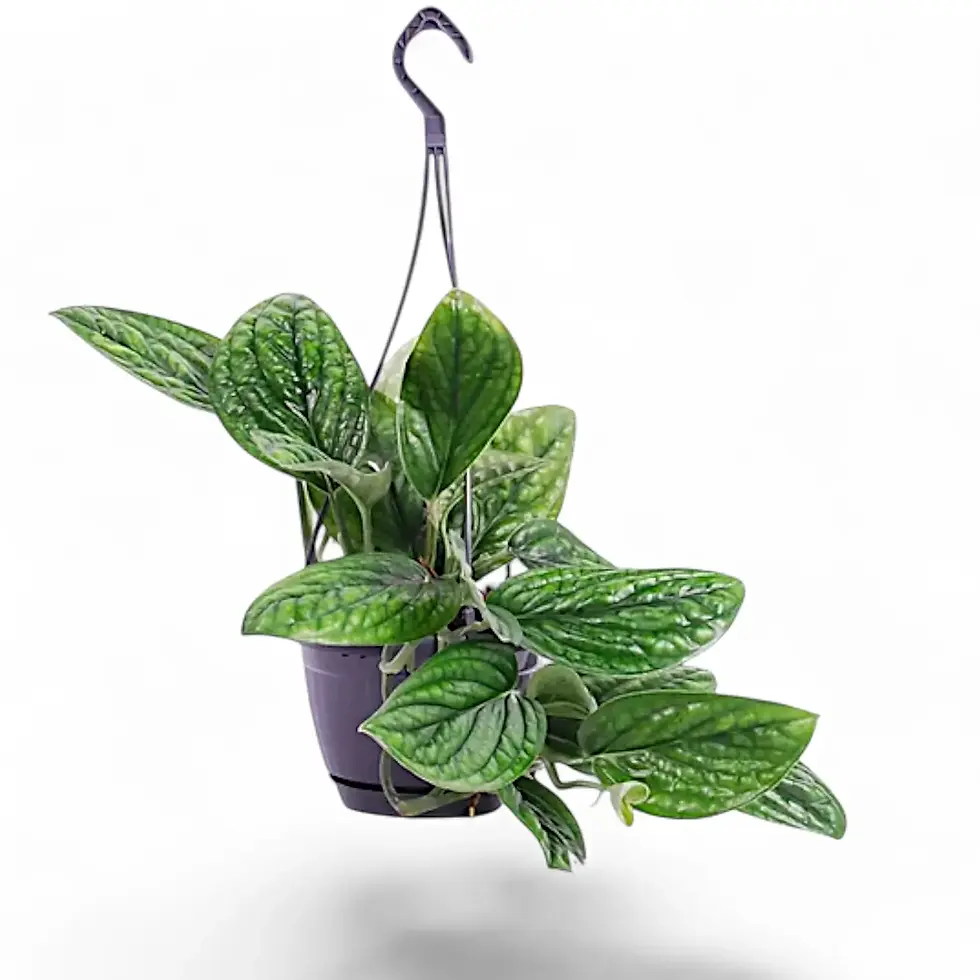Monstera sp. Peru ('Karstenianum') – Textured Elegance for Collectors
Monstera sp. Peru (commonly referred to as 'Karstenianum') is a compact Monstera species with thick, highly textured leaves unlike any other in the genus. While still undescribed botanically, it’s gained a global collector following for its crocodile-skin appearance, dense form, and slow-growing habit. Native to the humid rainforests of Peru, this slow-growing aroid thrives when climbing and adds unique depth to any indoor collection.
● What Makes Monstera sp. Peru Special?
- Distinctive Leaf Texture: Glossy, dark green leaves with deep embossing — thick, leathery, and non-fenestrated.
- Compact Growth: Ideal for small spaces — mature plants rarely exceed 1 meter indoors.
- Leaf Size: Mature leaves typically reach 10 – 15 cm long with oval shape and firm structure.
- Climbing Habit: Prefers moss poles, bark slabs, or totem boards for optimal leaf structure and growth.
- Toxicity: Contains calcium oxalate crystals — keep away from pets and children.
● Habitat and Botanical Context
- Native Range: Tropical rainforests of Peru; occasionally noted in parts of Ecuador.
- Growth Form: Hemiepiphytic climber adapted to humid, shaded forest understories.
- Taxonomic Status: Not formally described as of 2024; cultivated under the placeholder name 'Karstenianum.'
● Monstera sp. Peru Care Guide
Light
- Bright, indirect light supports healthy growth and enhanced texture.
- Low light slows growth and reduces vibrancy; avoid direct sun to prevent scorching.
Watering
- Water when the top 15-20% of soil dries out.
- Always use a well-draining pot and avoid standing water.
- Filtered or rainwater helps avoid mineral spots on leaves.
Humidity
- Performs best in 60 – 80 % humidity; tolerates average indoor levels but benefits from a humidifier or enclosed cabinet.
Temperature
- Prefers consistent warmth: 20 – 29 °C is optimal.
- Avoid exposing to cold drafts or temperatures below 16 °C.
Soil Mix
- Use a breathable aroid mix: coconut coir, orchid bark, perlite, and sphagnum moss.
Fertilization
- Fertilize every 4 – 6 weeks with diluted liquid fertilizer during the active growth period.
Climbing Support
- Attach to a moss pole or bark slab to trigger more robust, upright growth and thicker foliage texture.
Repotting
- Repot only every 2 – 3 years or when roots circle the pot.
- Use breathable containers with proper drainage.
Propagation
- Stem cuttings with 1 – 2 nodes root well in moist sphagnum, water, or semi-hydro setups.
● Common Problems and Solutions
Yellowing Leaves
- Usually a sign of overwatering or compact soil. Improve drainage and check substrate moisture.
Pests
- Susceptible to spider mites, thrips, and mealybugs. Use neem oil or insecticidal soap at first signs.
Leggy Growth
- Insufficient light leads to stretching — move closer to a bright, filtered light source.
Brown Tips
- Caused by low humidity or excess fertilizer salts. Increase moisture and flush substrate periodically.
● Botanical Notes and Etymology
- Genus Status: While cultivated as a Monstera, taxonomists suspect this plant may be reclassified as research progresses.
- “Monstera” Meaning: Latin for “monstrous” — originally describing the dramatic foliage forms seen across the genus.
- Non-Fenestrated Monstera: This is one of the few Monstera types that never produces leaf splits or holes.
● Frequently Asked Questions
Is Monstera sp. Peru fast-growing? Not particularly. It grows slowly and focuses on developing thick leaves and short internodes — especially in lower light.
Will it ever fenestrate? No. This is a non-fenestrated Monstera — its value lies in compact growth and rugged leaf texture, not leaf perforation.
Can I grow it in LECA? Yes. It adapts well to semi-hydro systems with stable nutrients and high humidity.
Is it suitable for beginners? Yes — it’s one of the easiest Monstera care routines to follow, thanks to its slow pace and drought resistance.
● Secure Your Monstera sp. Peru Today
Grow a compact, non-fenestrated Monstera that stands out for its texture, not size. Monstera sp. Peru ('Karstenianum') adds sculptural contrast to any plant shelf or climbing setup. Shop now and explore the rare side of Monstera care.
Monstera sp. Peru ('Karstenianum')
Monstera sp. Peru ('Karstenianum) plants come in following sizes:
S – is approximately 20 cm long/ tall, ø 12 cm
M – is approximately 30 cm long/tall, ø 15 cm hanging pot
L – is approximately 30 cm long/ tall, ø 28cm hanging pot































